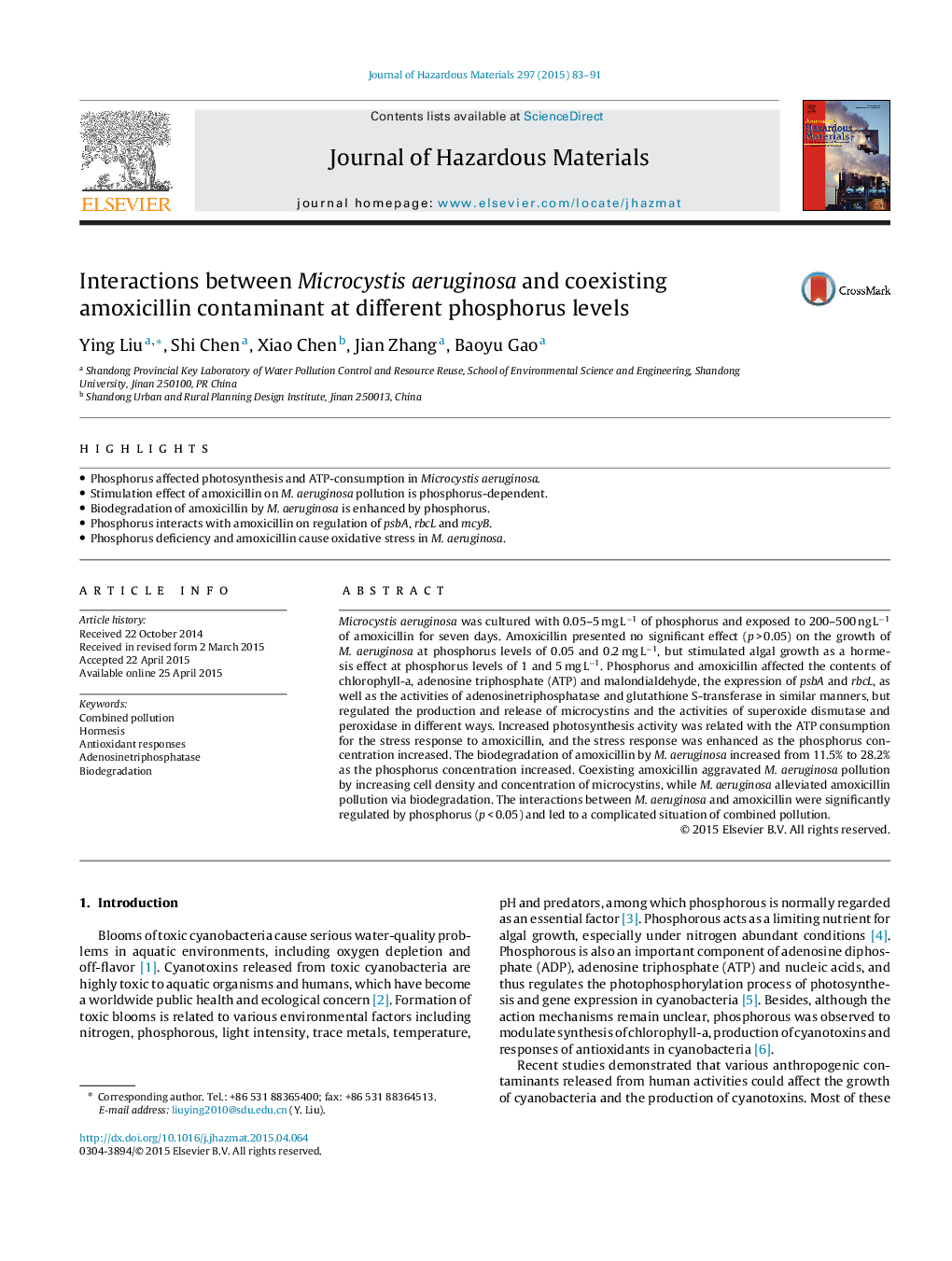| Article ID | Journal | Published Year | Pages | File Type |
|---|---|---|---|---|
| 6970815 | Journal of Hazardous Materials | 2015 | 9 Pages |
Abstract
Microcystis aeruginosa was cultured with 0.05-5 mg Lâ1 of phosphorus and exposed to 200-500 ng Lâ1 of amoxicillin for seven days. Amoxicillin presented no significant effect (p > 0.05) on the growth of M. aeruginosa at phosphorus levels of 0.05 and 0.2 mg Lâ1, but stimulated algal growth as a hormesis effect at phosphorus levels of 1 and 5 mg Lâ1. Phosphorus and amoxicillin affected the contents of chlorophyll-a, adenosine triphosphate (ATP) and malondialdehyde, the expression of psbA and rbcL, as well as the activities of adenosinetriphosphatase and glutathione S-transferase in similar manners, but regulated the production and release of microcystins and the activities of superoxide dismutase and peroxidase in different ways. Increased photosynthesis activity was related with the ATP consumption for the stress response to amoxicillin, and the stress response was enhanced as the phosphorus concentration increased. The biodegradation of amoxicillin by M. aeruginosa increased from 11.5% to 28.2% as the phosphorus concentration increased. Coexisting amoxicillin aggravated M. aeruginosa pollution by increasing cell density and concentration of microcystins, while M. aeruginosa alleviated amoxicillin pollution via biodegradation. The interactions between M. aeruginosa and amoxicillin were significantly regulated by phosphorus (p < 0.05) and led to a complicated situation of combined pollution.
Related Topics
Physical Sciences and Engineering
Chemical Engineering
Chemical Health and Safety
Authors
Ying Liu, Shi Chen, Xiao Chen, Jian Zhang, Baoyu Gao,
